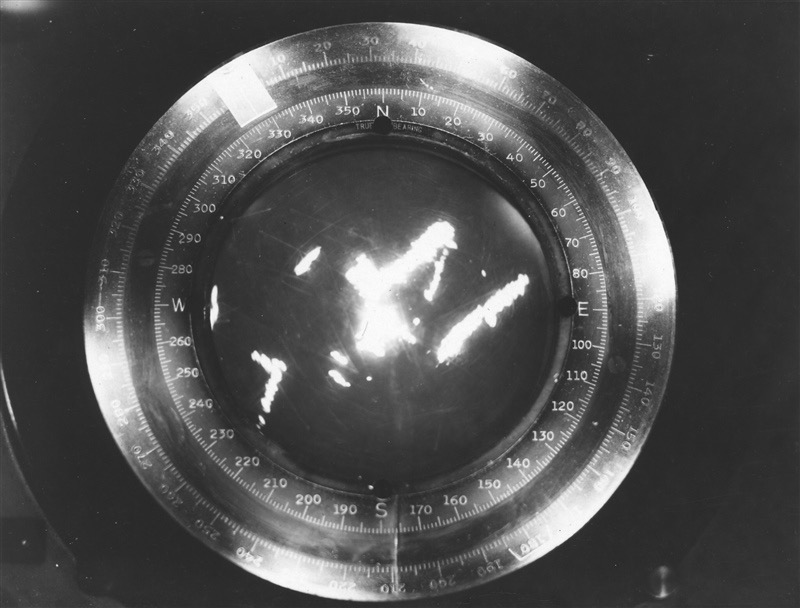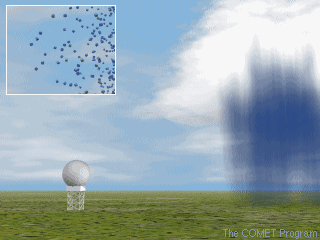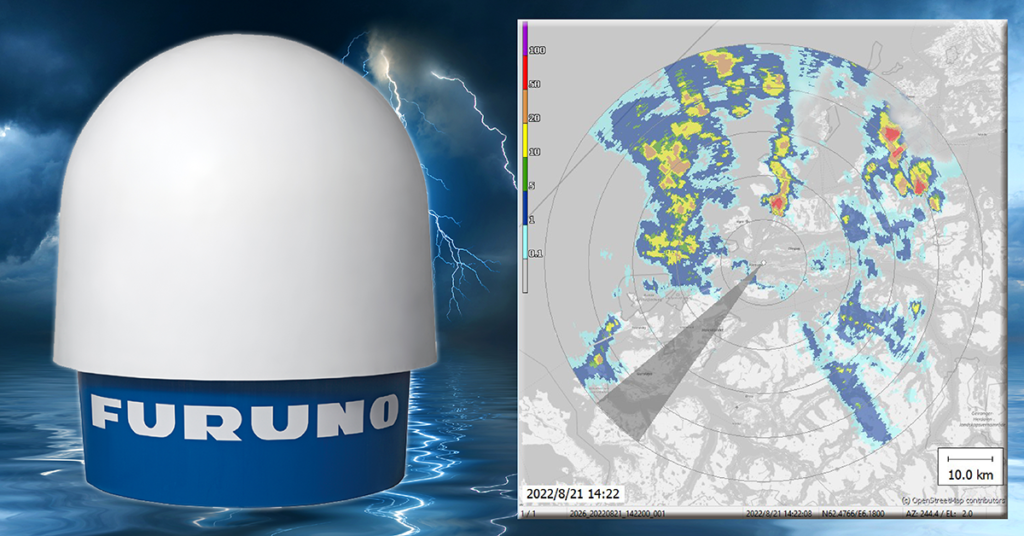What is a radar
A RADAR (Radio Detection And Ranging) is an instrument that can detect surrounding objects using radio waves. It works by transmitting strong, short pulses of microwaves energy into the air in a specific direction using what is called a directional antenna. By measuring the time it takes the signal pulse to travel to the target like a ship, aircraft, birds or precipitation, bounce off, and return to the transmitting antenna, a position of a detected target is determined. These signals are then converted into an electric signal and shown on screen where they can be viewed by an operator. Radars have many applications such as maritime navigation, meteorology and aerial surveillance. Radars are also widely used in everyday life to measure the speed of cars on a road or the speed of a tennis ball on a court for example.
History in short
In the late 1800`s there were many people around the world experimenting with radio waves and how to use them to detect objects. Many of these experiments fell into obscurity or did not obtain any customer interest.
It was first during World War II that RADAR`s was used and further developed as a method to detect the presence of ships and aircraft (the military considered weather targets as noise). The use of radar for weather observations occurred by an accident, where the analyst noted in periods of heavy weather that the radar would return strange signals. Investigation into this phenomenon resulted in the discovery that these echoes were returns from the precipitation, unmasking a further use for the technology.
The development and advancement of technology can take a bizarre path through the history of civilization. A technology that was developed for war has evolved into something that`s taken for granted in peace time. Radar was developed as a means to track incoming enemy aircraft and find ground targets to bomb. It is now used to monitor commercial air traffic, track weather patterns, and aid in general navigation.
Radar probably saved tens of thousands of lives during World War II and now it is used to provide basic comforts to society like telling us when it is going to rain or snow.

Echo on a radar
Although not using sound waves but short-wave microwaves, the principle of a Radar is the same as that of the sound. When in contact with an object, the waves reverberate and thus, the distance to the target and its direction can be accurately calculated. This information is then put in the form of visual data on a screen so it becomes readable. Let's suppose that a wave is sent to one specific direction.
The wave passes through its environment in a straight line, but when it hits an object on its path, it is reflected and part of this wave returns to its original position. This phenomenom is called reflection. It is the time it takes for this echo to return that will help to accurately determine the distance at which the object is located. Bearing to a target is determined by the direction from which a reflected echo returns. Since we know the direction the antenna is facing when the Radar energy is transmitted, we know the bearing of targets in the path of that beam of energy. The sharper the beam, the more accurately the bearing of a target can be determined.

Types of Radar Bands
Weather radars can be divided into several different categories according to wavelength of the radar. The different bands are L, S, C, X and K band. The names of the radars originate from the days of World War II.Most commonly used band for weather radars are S-band, C-band and X-band.Read more about the different bands below.
“L” for “long”. This band is mostly used for clear air turbulence studies. It operates on 15-30 cm wavelength and a frequency of 1-2 GHz.
“S” for “short”. It is not easily attenuated and is useful for near and long range weather observation. It operates on 8-15 cm wavelength and a frequency of 2-4 GHz. Some weather services use it on a wavelength of just over 10 cm. The drawback to this band of radar is that it requires a large antenna dish and large, complex motors to power it.
Deployed mostly in tropical and temperate climate areas, for example, in areas where hurricanes, tornadoes, large hail and monsoon or heavy rain are common.
Typical radome size: Φ12.6 m
“C” for “compromise”. The dish size does not need to as large so it is more affordable for TV stations. It operates on 4-8 cm wavelength and a frequency of 4-8 GHz. It is best used for shorter range weather observation because the signal is more easily attenuated by dry weather and rain. The frequency allows C band radars to create a narrower beam width using a smaller dish. C band radars also do not require as much power as an S band radar.
Used in climates where attenuation (weakening of radar return signal) by intervening heavy rain or large hail is a very minor issue.
Typical radome size: Φ7.0 m
“X” is derived from the XX2 secret band. It uses smaller wavelength, is more sensitive and can detect smaller particles. It operates on 2.5-4 cm wavelength and a frequency of 8-12 GHz. These radars are used for studies of cloud development because they can detect the tiny water particles and also used to detect light precipitation such as snow.
X-band radars also attenuate very easily so they are used for only shorter range hydrological and meteorological applications such as urban and mountain valley hydrology. Also due to the small size of the radar it can easily transported, like the “Doppler on Wheels” radar. Most commercial airplanes are equipped with X band radar to pick up turbulence and other weather phenomenon.
Typical radome size: Φ3.3 m
“K” for “kurz (German for short). This band is split down the middle due to a strong absorption line in water vapor and it is similar to the X band but is just more sensitive. It operates on 0.75-1.2 cm or 1.7-2.5 cm wavelength and a corresponding frequency of 27-40 GHz and 12-18 GHz.
Furuno Weather Radars use x-band

By using X-band frequency it allows the Furuno WR-110 and Furuno WR-2120 to be very compact and light weight, suitable for any location. The Furuno weather radars can be a very useful gap fillers, using the X-band and thus providing very detailed and high resolution presentation of weather observations within limited areas.

 English
English